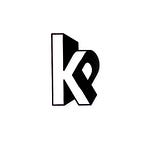Re-imagine e-commerce platform for IKEA
Visiting the IKEA store is like going on a vacation. You’ve done your online stalking, your expectations are super unrealistic, and you mentally prepare yourself to stay cool and collected throughout the entire experience.
Then, nothing goes as per plan.
This is a story of how we re-created their in-store experience online.
My Role
As part of my studies at GA Melbourne, I was part of the pitch team and responsible for the experience strategy and design of IKEA’s e-commerce website. I was responsible to produce all major deliverables within a two week timeline.
Discovery
Focusing on goals
Competitors: affordable furniture brands to compare their websites and features.
We chose Freedom furniture, Fantastic Furniture and A mart for the analysis.
To differentiate ourselves in an already competitive market, we needed to define a desirable role for the website and how it would meet the needs of its users. We were thrilled by the opportunity to create something more meaningful.
With telephonic interviews, in-store observations and contextual enquiries, we framed our key findings.
- People loved the in-store experience.They admired the pristine kitchen and living room setups and pray that someday their home can be just as spotless.
- Liked the assistance in the store.
- Touch and feel of the product was very important to the user.
And also the Swedish meat balls and ice-cream.
HOW MIGHT WE RE-CREATE THIS EXCITEMENT ONLINE?
Design
From these ideas we started designing an interactive catalogue where the user can customise their interests and develop their own IKEA catalogue and purchase/save the furniture thereby.
On testing this idea, we realised it wasn’t very clear to the user and we had to tweak it.
Based on IKEA’s goals, our user groups and experience, we resorted to creating a global search that would generate related IKEA product results when the user types any word.This search made the experience easy and fun.
Usability Testing and Iterations
On testing this idea, we realised the functionality of the website was clear to our tester, but they didn’t understand how this global/universal search worked. We had to show it to the user in another manner.
For example if the user types OCEAN, the screen begins to populate with IKEA products that is in close relation to the word ocean. This works with any word. The user can also search for a specific furniture like yellow couch- This would lead to showing a yellow couch and the user can alter the color in the filter section.
On testing again, The users understood the homepage and found the idea fun and interactive.
Prototype
Here’s the prototype and enjoy the interactive experience.
An interesting element in the prototype was the sound feature in the product specific page.
On clicking sound icon, the user gets to hear the sound of the furniture by simply tapping on the product and hovering over it with the cursor. This was an attempt to give the user a feel of the furniture.
Product Roadmap
- Virtual Steve- a VR app that helps users scan products within their home and look for alternate IKEA furniture.
- IKEA Party- Bringing all the IKEA users within their neighbourhood together and try out each other’s furniture. An attempt to exchange or look for inspiration.
My Reflections
Human Centred Design approach can be defined as process with no egos, just pure empathy. This holds good even on group dynamics. Beyond all the conflicts during ideation, I learnt to put all egos aside and work towards creating a strong deliverable.
